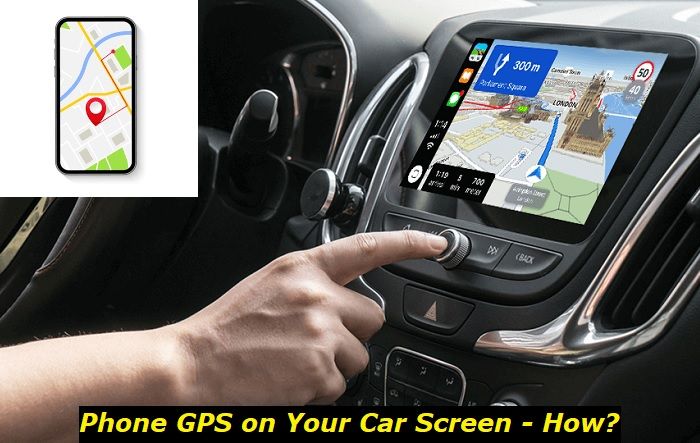As part of BMW's Roadside Assistance feature, the BMW X1 comes with a dedicated button for emergency calls. This system is a vital tool in ensuring driver safety and allows the driver to contact BMW Accident Assistance in the case of emergencies through a click of the SOS button.
Emergency call malfunction message highlights
- Common reasons:Telematic Control Unit broken or having low battery
- How to fix:look at the TCU, replace the battery in it, check if it works
- Possible consequences:no issues other than connectivity problems
- Priority level:Low
- Can you drive?Yes
- DIY repair:Possible but complicated
- Repair price range:$10-$750

Of course, it's in your best interest to keep this system working at all times. While no one plans to get into an accident, it's always ideal to have the SOS system operational for your safety. However, sometimes the screen on the instrument panel reads "Emergency call malfunction". This is a situation that needs to be remedied as soon as possible to keep you safe. What causes this malfunction, and how can you get rid of it?
Causes of the Emergency Call Malfunction
The Emergency call system can fail for a few different reasons, but it usually indicates an electrical problem. The emergency call system is required to work even when the car is non-operational, or when the car is severely damaged from an accident. To ensure that it does, the emergency call system is powered by a discrete backup battery with an electrical system that is separate from that of the rest of the car.
If the backup electrical system develops any problems, it could impede the function of the emergency call system.
1) Faulty Telematics Control Unit
The telematics control unit (TCU) is an important system that is responsible for communication and wireless tracking. The TCU contains a GPS unit, wireless communication systems, and the SOS button.
These systems allow the TCU to make an emergency call when a crash is detected. When damage is detected in this system, it will cause the emergency call malfunction warning to come up.
2) Faulty Emergency Battery
The most common cause of this malfunction is a failure of the emergency battery that powers the telematics control unit.
This problem is present in all BMW models, but it is especially common with BMWs manufactured in 2018. When the system detects a problem with the emergency battery it will warn the driver. This is because a faulty battery needs to be replaced so that the system has backup power readily available in the case of an emergency.
This battery failure is common in older BMWs as the seal around the trunk fails. This allows water to get into the ceiling of the car and cause damage to the battery and internal components in that area. Signs of water damage on the headliner are a good indicator that the battery has been damaged by water.
3) Depleted Emergency Battery
Another common cause of this problem is a depleted emergency battery. This is especially common if the car hasn't been used for a long while. The emergency battery is charged by the alternator whenever you run the engine. Allowing the car to sit for too long without being used can cause the emergency battery to discharge and become depleted. This will result in an emergency call malfunction warning.
4) Damaged or Faulty Wiring
If the wiring between the iDrive head and the telematics control unit is faulty, it can cause this error to come up. The wiring between the TCU and the emergency battery can also result in this malfunction if it is faulty, or if there are any loose connections.
The TCU is located in the trunk where it can suffer water damage if the trunk seal is aged or damaged. This can result in short-circuiting or corrosion of the TCU wiring and connectors.
Faulty Wiring in another part of the car, like the CAN bus connector, can cause the computer to trip up and erroneously display an "Emergency call malfunction". Short circuits or open circuits in other parts of the car can result in computer errors that could make this error come up even though the emergency call system is fine.
How to Fix the Emergency Call Malfunction
An emergency call malfunction is a common problem that can often be resolved quickly once you know the root cause. One of the main reasons this issue occurs is due to an electrical fault related to the TCU or emergency battery.
To fix the issue, it's important to first identify the cause. Once you know what's causing the problem, you can determine the next steps needed to fix it. In some cases, this may involve disassembling and removing electrical components from your car. If you don't feel comfortable doing this type of work on your own, you can bring your vehicle to a trained automotive professional or a dealership for assistance.
Remember, it's always a good idea to be cautious when working on your car and to follow all safety instructions. If you're unsure of how to proceed, it's always best to seek help from a trained professional. With their expertise and knowledge, they can quickly diagnose and fix the problem, ensuring that your emergency call system is functioning properly and that you can rely on it in the event of an emergency.
- Try to Charge the Battery
If the emergency battery has become discharged or flat, you can attempt to recharge it using the car's main battery. To do this you will need to start the car's engine. As the engine runs, the alternator will begin to charge the emergency battery. Usually running the car for a few hours will charge the emergency battery to a suitable level.
If after running the vehicle for a few hours, you are still receiving this error, then the problem is originating from somewhere else. It is worth inspecting the emergency battery to make sure it is not faulty.
- Replace the Emergency Battery
If the problem is caused by a faulty emergency battery, then replacing the battery will solve this problem. To replace the battery, you will need to remove the headliner of the vehicle. A replacement battery can be ordered online or through a BMW dealership.
Removing the headliner of the vehicle is a somewhat complicated task that involves removing the handles and lights from the ceiling of the car. To do this you will need adhesive spray, a rebreather to protect you from the adhesive spray, and screwdrivers.
- Replace the TCU
A faulty TCU will render you unable to use the emergency call function, as well as other functions of the TCU like Bluetooth. A faulty TCU will need to be replaced to restore emergency call functionality.
The BMW TCU module is located in the trunk area. It is relatively easy to remove but installing a new one will require it to be coded. If you are not sure how to do this, you can have the replacement installed and coded by a BMW dealership.
- Inspect the Wiring
If replacing the battery hasn't resolved the problem, then you are most likely dealing with an electrical issue. This can be tricky to diagnose and solve, and you are advised to contact an automotive electrician to hunt down the issue for you.
If you decide to investigate it yourself, a good place to start is with the wiring and connectors for the TCU. The TCU is located in the trunk area, and a failed trunk seal will allow water to get into the trunk area and cause damage. If you find any damaged or corroded connectors or wiring, you may need to replace the wires or even the entire TCU.
After examining the connectors for the TCU, you should also inspect the electrical connectors and make sure all contacts are clean. You can make use of electrical contact cleaner to ensure that the contacts aren't being disturbed by grime or oxidation.
After tending to the contacts, you will need to examine the wires. Pick a single wire and examine it from one end to the other, looking for burnt or cracked insulation, and broken wiring. If you find any wires that are damaged, they will need to be replaced with a similar wire.
Conclusion
The BMW X1's emergency call system is an important feature designed to ensure driver safety and provide assistance in the event of an accident. However, it is not uncommon for this system to experience a malfunction, which can be caused by various issues such as electrical problems, a faulty telematics control unit, a depleted or damaged emergency battery, or faulty wiring.
It is important to address these issues as soon as possible to ensure the proper functioning of the emergency call system. These issues can be solved by attempting to charge or replace the emergency battery, inspecting the wiring, and replacing the TCU if it is damaged or faulty. If you are not comfortable addressing these issues on your own, it is recommended to bring your vehicle to a trained automotive professional or dealership for assistance.
About the authors
The CarAraC research team is composed of seasoned auto mechanics and automotive industry professionals, including individuals with advanced degrees and certifications in their field. Our team members boast prestigious credentials, reflecting their extensive knowledge and skills. These qualifications include: IMI: Institute of the Motor Industry, ASE-Certified Master Automobile Technicians; Coventry University, Graduate of MA in Automotive Journalism; Politecnico di Torino, Italy, MS Automotive Engineering; Ss. Cyril and Methodius University in Skopje, Mechanical University in Skopje; TOC Automotive College; DHA Suffa University, Department of Mechanical Engineering






Add comment